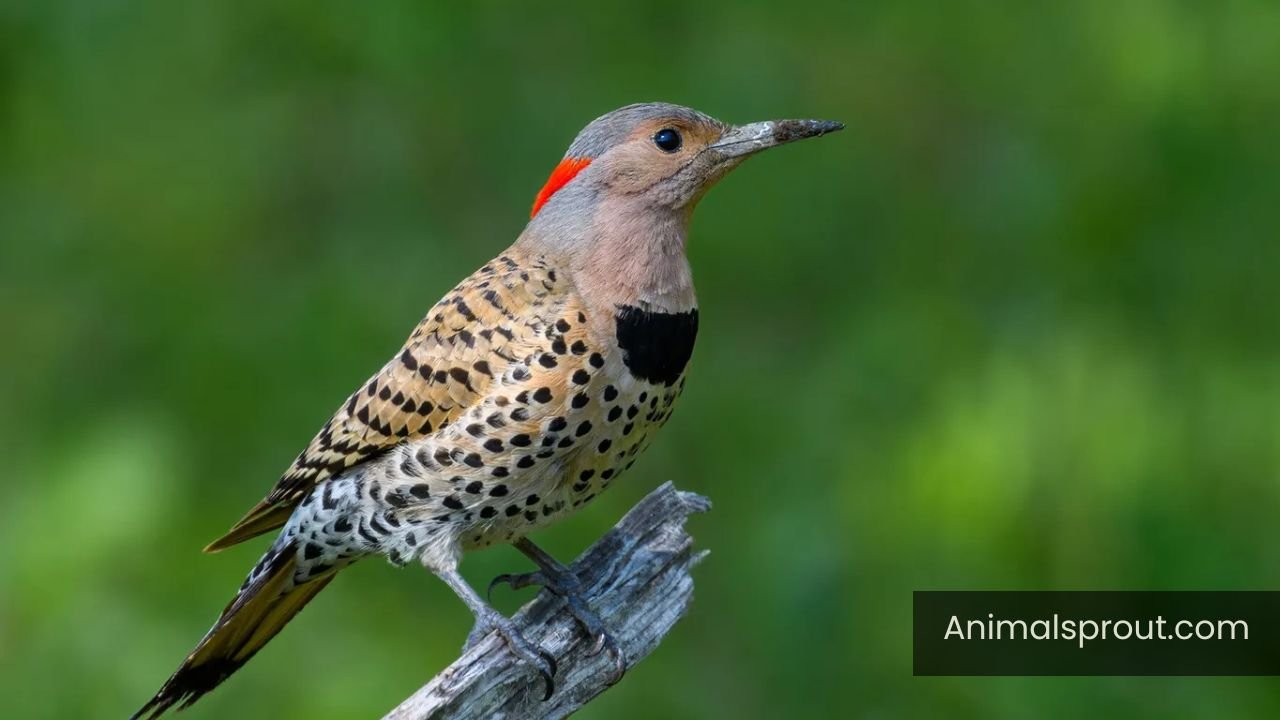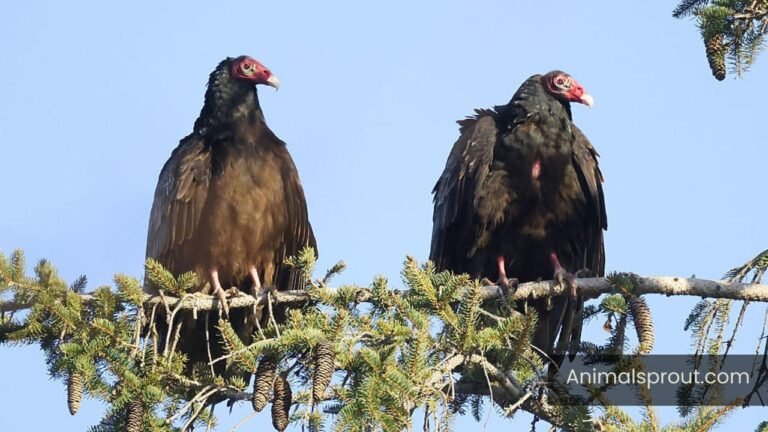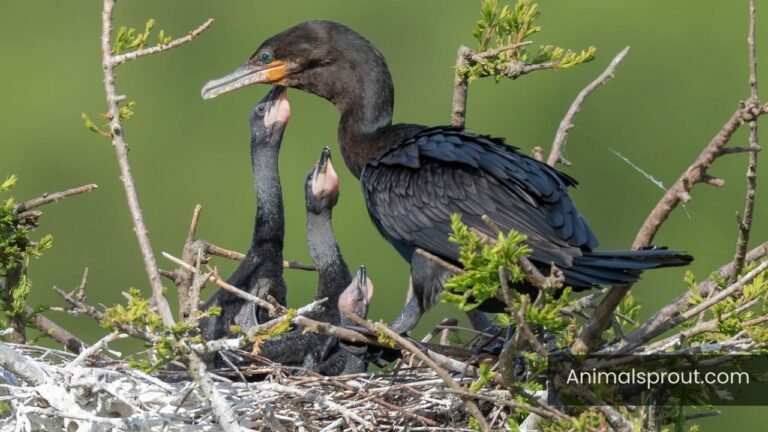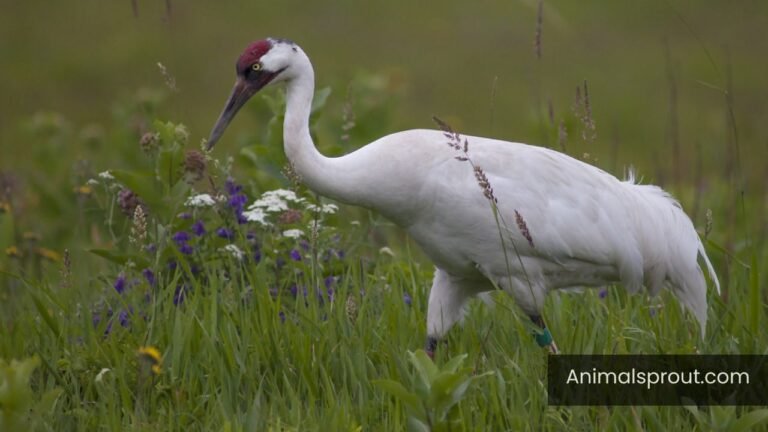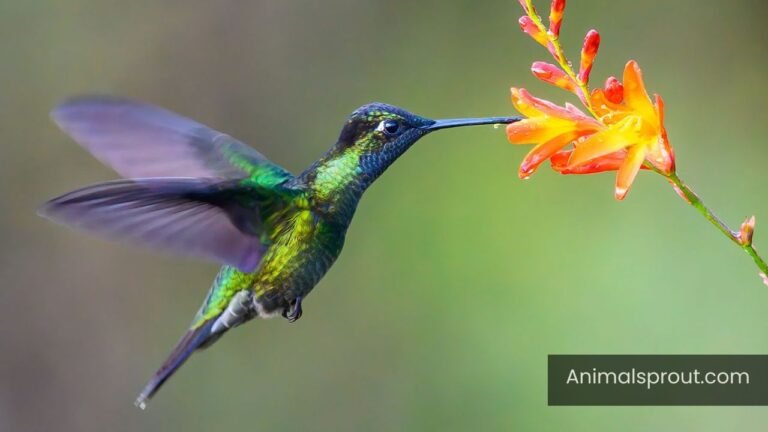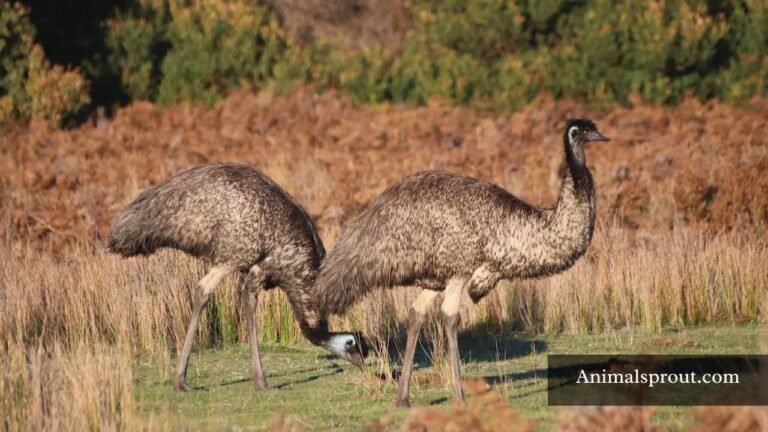9 Types Of Woodpeckers In Wisconsin (With Pictures)
Did you know that Wisconsin is home to nine species of woodpeckers, each with its unique characteristics and behaviors? In this article, we’ll explore the fascinating world of woodpeckers in Wisconsin, uncovering their habitats, nesting habits, and the critical roles they play in our ecosystems. Whether you’re a birdwatching enthusiast or simply curious about the wildlife in your backyard, you’ll gain valuable insights into how these remarkable birds contribute to biodiversity and forest health.
List Of Woodpeckers In Wisconsin
Below are the woodpeckers of Wisconsin:
- Red-headed Woodpecker
- Red-bellied Woodpecker
- Yellow-bellied Woodpecker
- Downy Woodpecker
- Hairy Woodpecker
- American Three-toed Woodpecker
- Black-backed Woodpecker
- Northern Flicker
- Pileated Woodpecker
Red-headed Woodpecker
Scientific Name: Melanerpes erythrocephalus
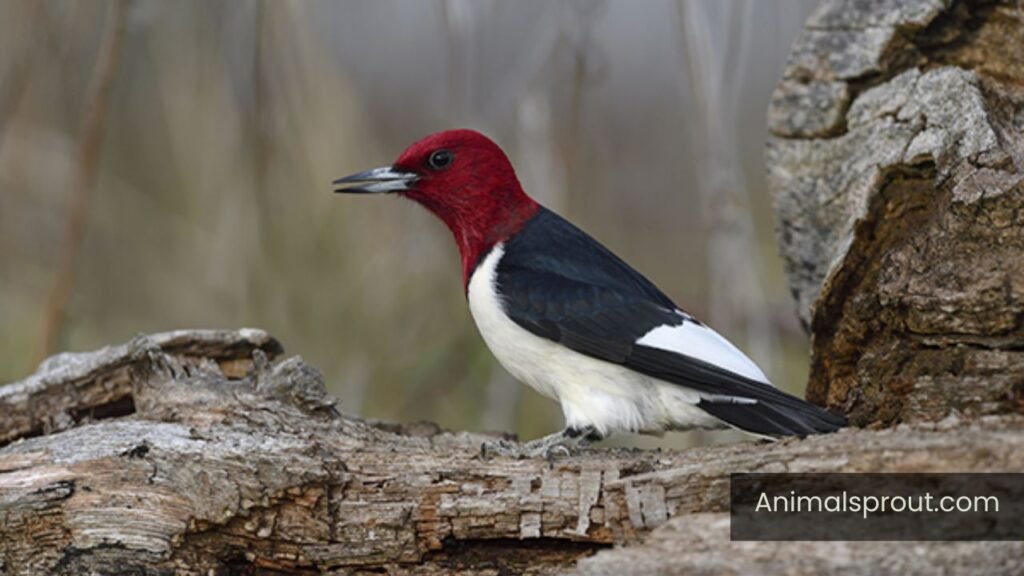
Identification
The Red-headed Woodpecker is a striking avian gem found across Wisconsin’s forests and open woodlands. Its vivid plumage is a bold statement in the natural world: a bright crimson crown contrasts sharply with its stark white underbelly and deep black wings. This woodpecker’s distinctive appearance makes it relatively easy to identify, especially when it’s in flight, showcasing its large, square tail and graceful glides between trees. Observers often note the sharp, white patches on its back, which add to its visual allure and serve as key identification markers.
Beyond its physical traits, the behavior of the Red-headed Woodpecker adds another layer to its identification. Unlike many of its woodpecker cousins that often cling to tree trunks, this species displays a unique penchant for sallying out from perch points to snatch insects mid-air, showcasing a dynamic hunting technique. Their call—a sharp, staccato “wick-a-wick-a-wick”—is both memorable and distinct, echoing through the forest and marking their territory.
Range
The Red-headed Woodpecker thrives in the diverse habitats of Wisconsin, where it claims a range that reflects its adaptability. From the oak savannas of the southwest to the mature forests in the north, this striking bird flourishes in areas rich with dead trees and open spaces. Its preference for deciduous woodlands, interspersed with meadows and wetlands, highlights its unique ecological niche, which supports both nesting and foraging.
Interestingly, Red-headed Woodpeckers are not just confined to the wooded realms; they can also be spotted in urban parks and suburban backyards that offer suitable nesting sites. Their bold, contrasting plumage stands out against the lush green backdrop, making them a favorite among birdwatchers.
Diet and Foraging Habits
The Red-headed Woodpecker of Wisconsin showcases an intriguing diet that goes beyond the typical insect fare. While they do enjoy a hearty meal of beetles, ants, and caterpillars, these birds are also opportunistic foragers. They have been known to feast on fruits, nuts, and even small vertebrates, making them a versatile presence in their habitat. In late summer, you might spot them deftly plucking berries from trees, adding a splash of color to their diet that complements their vibrant plumage.
Foraging strategies are just as fascinating as their diet. Red-headed Woodpeckers employ a unique technique called “caching,” where they store food in tree crevices for later consumption. This behavior not only reflects their intelligence but also highlights the importance of habitat diversity in Wisconsin’s forests.
Where to Find This Bird
The Red-headed Woodpecker, with its striking crimson crown and bold black-and-white body, can be found in the heart of Wisconsin’s oak savannas and open woodlands. This striking bird thrives in areas where dead trees are plentiful, as these snags provide essential nesting sites and a bounty of insects to forage. Look for them in places like the Kettle Moraine State Forest or the vast expanses of the Chequamegon National Forest, where they are often seen drumming on tree trunks or flitting between branches.
For an unforgettable experience, visit the marshy edges of the Wisconsin River or the scenic trails of the Mississippi River bluffs during late spring and early summer. These habitats attract not only the Red-headed Woodpecker but also a vibrant array of migratory birds.
Red-bellied Woodpecker
Scientific Name: Melanerpes carolinus

Identification
The Red-bellied Woodpecker, a striking inhabitant of Wisconsin’s woodlands, boasts a captivating blend of colors that make it easily identifiable. While its name suggests a prominent red belly, it’s the vibrant crimson cap on the male’s head that truly draws attention, contrasting beautifully with the black-and-white striped back. Observers often notice the subtle blush of red on the abdomen, which can be overlooked at first glance but adds to its charm. This species showcases a unique behavior, often clinging to tree trunks and moving in a zigzag pattern as it forages for insects beneath the bark.
What sets the Red-bellied Woodpecker apart from its counterparts is not just its appearance but also its distinctive call—a series of rhythmic “churr” sounds that echo through the forests of Wisconsin.
Range
The Red-bellied Woodpecker, a striking avian resident of Wisconsin, showcases a fascinating range that extends beyond mere geography. While these birds predominantly thrive in the eastern and central parts of North America, Wisconsin provides a unique habitat that supports their vibrant lifestyle. Their preference for deciduous forests and mixed woodlands allows them to tap into a rich food supply, which includes insects and fruits, making the state an ecological haven for these woodpeckers.
Interestingly, the Red-bellied Woodpecker is not just a seasonal visitor; it has adapted well to urban areas and suburban gardens, often seen flitting between trees and feeders.
Diet and Foraging Habits
The Red-bellied Woodpecker, a vibrant resident of Wisconsin’s woodlands, boasts a diverse diet that reflects its adaptability. Primarily insectivorous, these birds feast on ants, beetles, and larvae hidden beneath tree bark. However, they’re not picky eaters; in fact, they often switch to seeds and fruits when insects are scarce. This dietary flexibility allows them to thrive in various habitats, from dense forests to suburban backyards.
Foraging for food is an art form for the Red-bellied Woodpecker. With their strong beaks, they expertly drum on trees to uncover hidden morsels, creating a rhythmic symphony that resonates through the woods. They also employ a unique technique called “gleaning,” where they carefully pick insects off leaves and branches—an impressive feat that showcases their keen eyesight and dexterous movements.
Where to Find This Bird
In Wisconsin, the Red-bellied Woodpecker can be spotted in a variety of habitats, from deciduous forests to suburban backyards. These birds are often found in areas with mature trees, particularly oak and maple, as they forage for insects and larvae hidden in the bark. Look for them in parks or nature reserves, where their distinctive calls can often be heard echoing through the trees.
For a more intimate encounter, consider visiting places like the Kettle Moraine State Forest or the North Woods region, where these woodpeckers thrive. Early mornings or late afternoons are prime times for observation, as they are most active during these hours.
Yellow-bellied Woodpecker
Scientific Name: Sphyrapicus varius
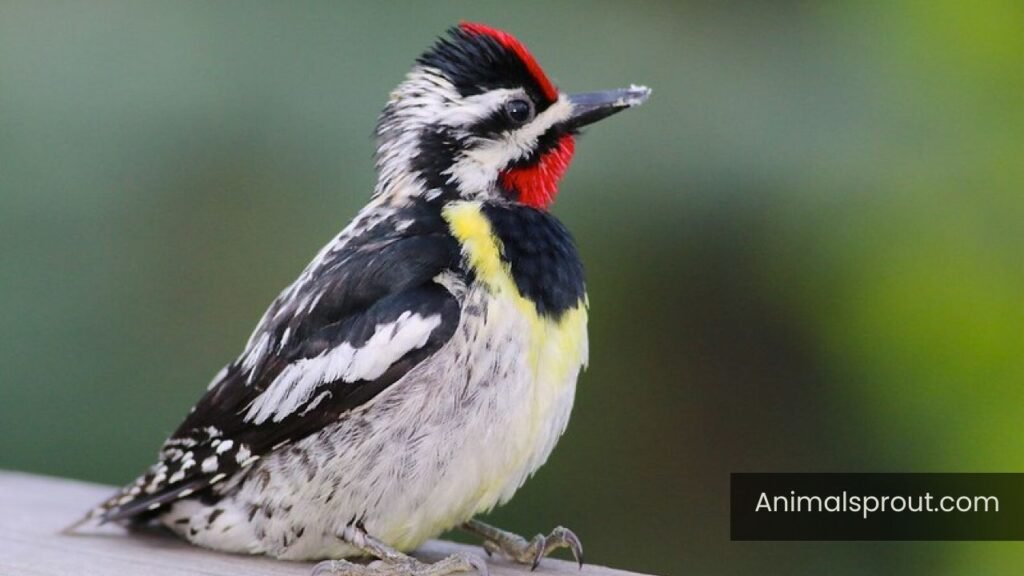
Identification
The Yellow-bellied Woodpecker, a striking presence in Wisconsin’s woodlands, can be identified by its unique combination of features. With a vibrant yellow underbelly that contrasts sharply against its dark back and white-spotted wings, this medium-sized bird is a delight for both seasoned birdwatchers and casual observers. The male boasts a distinctive black crown adorned with a red patch, while the female sports a more subdued appearance, lacking the bright coloration on her head. Their elongated bodies and strong, chisel-like beaks are perfectly adapted for their primary occupation: foraging for insects hidden beneath tree bark.
In addition to their eye-catching plumage, the Yellow-bellied Woodpecker is often recognized by its drumming sound—a rhythmic tapping that echoes through the forests. This call serves not only to establish territory but also to attract mates during the breeding season.
Range
The Yellow-bellied Woodpecker, known for its striking plumage and distinctive call, finds its home in the diverse woodlands of Wisconsin. This species typically thrives in deciduous forests, particularly where mature trees abound, providing ample foraging opportunities for insects and larvae hidden within the bark. While many birdwatchers may primarily associate this woodpecker with northern regions, its range extends into southern Wisconsin during breeding season, where it can be spotted flitting among the branches in search of food.
Interestingly, the Yellow-bellied Woodpecker is not just a resident of established forests; it also adapts well to fragmented habitats such as parks and urban green spaces. This adaptability highlights a fascinating aspect of its behavior—while it prefers older trees for nesting, it can thrive in areas influenced by human activity if the habitat offers the right resources. Observing these woodpeckers in both natural and urban settings challenges the conventional notion of wildlife needing untouched environments, showcasing how nature can find a way to coexist alongside development. As winter approaches, many of these woodpeckers migrate southward, leaving behind a silence that reminds us of their vibrant presence during the warmer months.
Diet and Foraging Habits
The yellow-bellied woodpecker, a striking presence in Wisconsin’s woodlands, has a diet as varied as its vibrant plumage. Primarily, these birds feast on insects and larvae hidden within the bark of trees, using their strong beaks to excavate hidden treasures. They have a particular fondness for ants and beetles, often foraging along the trunks of deciduous trees. Their keen eyesight allows them to spot potential meals from afar, making them adept hunters in the forest canopy.
But it’s not just insects that grace their menu; these woodpeckers also indulge in the sweet sap of birch and maple trees. During the spring, they can be seen tapping rhythmically on tree trunks, creating small holes that not only serve as feeding stations but also as nesting sites. This dual-purpose foraging strategy highlights their adaptability, allowing them to thrive in diverse habitats.
Where to Find This Bird
The Yellow-bellied Woodpecker, a striking sight in Wisconsin’s woodlands, thrives in diverse habitats ranging from deciduous forests to mixed woodlands. Look for them in areas where mature trees abound, particularly around birch and maple, as these are their preferred nesting sites. The bird’s distinctive yellow belly and rhythmic drumming can often lead you to its location—listen for the rapid tapping echoing through the trees, a call that resonates with the essence of the forest.
To maximize your chances of spotting this elusive bird, visit the Kettle Moraine State Forest or the Chequamegon National Forest during the spring and early summer months when they are most active.
Downy Woodpecker
Scientific Name: Dryobates pubescens

Identification
The Downy Woodpecker is a delightful and diminutive bird that can be easily identified by its striking black-and-white plumage. Adult males showcase a small red patch on the back of their heads, a vibrant accent against their otherwise monochromatic appearance. This charming woodpecker measures about six to seven inches in length, making it one of the smallest woodpeckers in North America. Its short, stubby bill contrasts with its longer, pointed tail, which helps it balance while clinging to tree trunks.
When observing these birds in Wisconsin’s woodlands, look for their unique feeding behavior. Unlike larger woodpeckers that often create deep holes, the Downy Woodpecker tends to peck at the surface of trees, searching for insects beneath the bark. Their distinctive “drumming” is often a key identifying feature, a rapid series of taps that echoes through the forest
Range
The Downy Woodpecker, a charming resident of Wisconsin, thrives in a variety of habitats across the state. From urban parks to rural woodlands, these little birds are adept at adapting to different environments. Their range extends throughout Wisconsin, with a notable presence in both deciduous and mixed forests, where they forage for insects hidden beneath the bark of trees.
Diet and Foraging Habits
The Downy Woodpecker, a charming resident of Wisconsin, showcases a fascinating approach to foraging that reveals its adaptability and resourcefulness. These small birds primarily feast on insects, especially larvae hidden beneath the bark of trees. With their specialized, chisel-like beaks, they expertly peck away at wood, revealing hidden morsels. But their diet isn’t limited to bugs; they also relish seeds from various plants and berries, making them opportunistic feeders who take full advantage of seasonal offerings.
Foraging occurs in a variety of habitats, from dense woodlands to urban parks, demonstrating their versatility. Their unique drumming—a rhythmic tattoo on tree trunks—acts as both a foraging tool and a form of communication. This sound resonates through the forests of Wisconsin, drawing attention to their industrious behavior. Interestingly, Downy Woodpeckers often forage in pairs or small groups, allowing them to share information about food sources and potential threats.
Where to Find This Bird
In Wisconsin, the Downy Woodpecker can often be spotted flitting about in a variety of habitats, from suburban backyards to dense woodlands. Look for them in areas with mature deciduous trees, as they have a preference for maple, oak, and birch. Their distinctive black-and-white plumage makes them stand out against the bark, especially when they’re busy probing for insects or tapping rhythmically on tree trunks.
Early morning is the best time to observe these charming little woodpeckers, as they are most active at dawn. If you find yourself near a park or nature reserve, keep an ear out for their soft “pik” calls and listen for the familiar drumming sound echoing through the trees.
Hairy Woodpecker
Scientific Name: Dryobates villosus

Identification
The Hairy Woodpecker, a striking inhabitant of Wisconsin’s forests, is often mistaken for its smaller cousin, the Downy Woodpecker. While both species share similar plumage, the Hairy Woodpecker stands out with its larger size and more robust bill. Adult males can be identified by their distinctive black-and-white striped head and a splash of red on the back of their crown, while females sport a more muted palette, lacking the vibrant red.
Range
The Hairy Woodpecker, a striking black-and-white bird, thrives in the diverse woodlands of Wisconsin, showcasing its adaptability across various habitats. From dense forests to urban parks, this species has carved out a niche in both mature and younger woodlands, often favoring areas with abundant deciduous trees. Their range extends throughout the state, but they are particularly prevalent in regions with a mix of hardwoods and conifers, where they can find ample food sources and nesting sites.
Diet and Foraging Habits
The Hairy Woodpecker, a familiar resident of Wisconsin’s forests, showcases a fascinating diet that reflects its adaptability. Primarily feeding on insects, particularly wood-boring beetles and larvae, these birds are expert foragers, using their sharp beaks to excavate hidden treats from tree bark. However, they don’t stop at insects; during the winter months, they supplement their diet with seeds and fruits, demonstrating a remarkable versatility that allows them to thrive in varying conditions.
Interestingly, Hairy Woodpeckers have a unique foraging strategy that sets them apart from their Downy counterparts. While both species share habitats, the Hairy Woodpecker prefers larger trees and often forages at higher elevations, seeking out more robust food sources hidden deep within the bark. Their powerful beaks and agile climbing skills allow them to excavate insect larvae and other delicacies with precision.
Where to Find This Bird
These striking birds thrive in mature forests, particularly those with a mix of deciduous and coniferous trees. Look for them in places like the Chequamegon National Forest or the Kettle Moraine State Forest, where the towering trees create a perfect habitat for their foraging habits.
Listening for their distinctive drumming can also lead you to these elusive birds. They often peck at dead or dying trees, so keep an eye out for signs of woodpecker activity—like fresh wood shavings on the ground.
American Three-toed Woodpecker
Scientific Name: Picoides dorsalis
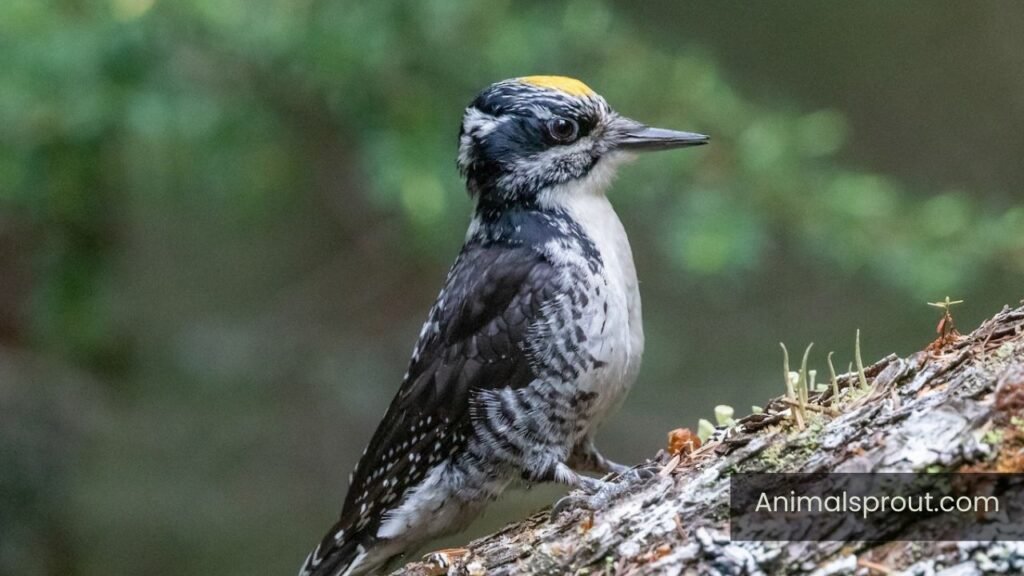
Identification
The American Three-toed Woodpecker is a striking avian presence in Wisconsin’s coniferous forests, easily identified by its unique plumage and distinctive markings. Adult males display a vibrant yellow patch on the back of their heads, contrasting beautifully with their black and white patterned feathers. Females, while lacking the male’s bright cap, are equally captivating with their more subdued tones.
Range
The American Three-toed Woodpecker is a fascinating inhabitant of Wisconsin’s northern forests, where its presence signals healthy, mature coniferous ecosystems. This elusive bird thrives in areas rich with old-growth trees, particularly favoring spruce and pine stands that show signs of decay. Its range extends through the boreal forests of Canada but dips into the northern reaches of Wisconsin, highlighting a unique intersection of habitat and climate.
Diet and Foraging Habits
The American Three-toed Woodpecker, a striking inhabitant of Wisconsin’s forests, exhibits a fascinating diet that reflects its unique ecological niche. Primarily foraging on dead or dying trees, this woodpecker has adapted to thrive in areas affected by bark beetles and other wood-boring insects. Its specialized feeding habits allow it to extract larvae from beneath the bark, showcasing not only its impressive drilling skills but also its role in maintaining forest health by promoting decomposition and nutrient cycling.
Interestingly, the three-toed woodpecker doesn’t just rely on its powerful beak; it employs a keen sense of hearing to locate hidden prey. As it taps rhythmically on tree trunks, it listens for the telltale sounds of movement within the wood. This auditory finesse is complemented by its ability to cling to vertical surfaces, allowing it to explore every nook and cranny of its arboreal habitat.
Where to Find This Bird
To spot the elusive American Three-toed Woodpecker in Wisconsin, venture into the boreal forests that blanket the northern part of the state. These birds thrive in areas rich with dead or dying trees, often preferring habitats that have been affected by wildfires or beetle infestations. Look for them in the mixed coniferous forests, particularly where lodgepole pine and spruce dominate the landscape. Early mornings or late afternoons are prime times for sightings, as this is when they are most active and vocal.
Consider visiting locations like Chequamegon National Forest or the scenic Apostle Islands region, where dense stands of trees create a perfect backdrop for their foraging activities.
Black-backed Woodpecker
Scientific Name: Picoides arcticus

Identification
The Black-backed Woodpecker is a striking bird that captures the attention of both seasoned birdwatchers and casual observers alike. With its unique black and white plumage, the male sports a distinct yellow crown that sets him apart from other woodpeckers. Females lack this vibrant hue, yet they share the same stunning contrast of glossy black feathers against a backdrop of pure white on their undersides, making them equally captivating. Their stout bodies and long, chisel-like beaks are perfectly adapted for drilling into the bark of coniferous trees, where they forage for insects hidden beneath the surface.
Range
The Black-backed Woodpecker is a striking bird that thrives in the unique landscapes of Wisconsin, particularly after forest disturbances like wildfires or logging. These woodpeckers are often found in mature coniferous forests, where their preference for dead trees provides ample foraging opportunities.
Diet and Foraging Habits
The Black-backed Woodpecker, a striking bird of Wisconsin’s coniferous forests, has a diet that reflects its unique habitat. Primarily feeding on insects, particularly wood-boring beetle larvae, it excels at foraging in recently burned or dying trees. This adaptive behavior not only showcases its survival skills but also highlights its role in forest ecology; by targeting weakened trees, the woodpecker promotes regeneration and biodiversity.
Foraging is an art for these woodpeckers. They deftly excavate bark to uncover hidden larvae, often making their presence known with a rhythmic drumming on tree trunks. This method is not just about food; it’s a vital communication tool during breeding season. Moreover, their foraging habits can transform the landscape—creating cavities that other species may later use for nesting or shelter.
Where to Find This Bird
These elusive woodpeckers thrive in mature coniferous forests, particularly in areas that have experienced recent wildfires or blowdowns. The charred landscapes create a buffet of insects, which attracts these woodpeckers, making places like the Chequamegon National Forest prime spots for sightings.
For those eager to catch a glimpse, head to the northwestern region of the state where patches of jack pine and spruce are more common. The sounds of their drumming can often be heard echoing through the trees, a rhythmic call that draws enthusiasts closer. Early mornings or late afternoons during the breeding season are especially fruitful times for observation, as the males are busy establishing territories.
Northern Flicker
Scientific Name: Colaptes auratus

Identification
The Northern Flicker, a striking woodpecker native to Wisconsin, captivates birdwatchers with its distinctive markings and behaviors. Unlike many of its woodpecker relatives, the flicker can often be spotted foraging on the ground, a behavior that sets it apart and highlights its adaptability. With a wingspan of about 16 to 20 inches, this medium-sized bird showcases a beautiful array of colors, including a rich brown plumage adorned with bold black spots, and a striking crescent-shaped black “necklace.”
One of the most fascinating aspects of identifying the Northern Flicker is its two primary color variations: the yellow-shafted flicker found in the eastern regions, including Wisconsin, and the red-shafted flicker prevalent in the West. The yellow-shafted flicker displays bright yellow underwings and tail feathers, which become particularly visible in flight, creating a stunning visual spectacle against the backdrop of green forests or open fields. Their call—a series of loud, ringing notes—can also serve as a helpful ide
Range
The Northern Flicker, a striking woodpecker species, finds a unique niche in Wisconsin’s diverse landscapes. Unlike many of its relatives that prefer dense forests, this bird thrives in open woodlands, parks, and even suburban areas. Its adaptability is remarkable; the flicker forages on the ground for ants and beetles, showcasing behavior not typical of most woodpeckers. This ground-feeding habit allows it to exploit a variety of habitats, making it a familiar sight across the state.
As spring arrives, these birds migrate northward from their wintering grounds in the southern U.S. and Mexico, reclaiming their territory with distinctive calls that echo through the air.
Diet and Foraging Habits
The Northern Flicker, a striking woodpecker often spotted across Wisconsin, exhibits fascinating foraging habits that set it apart from its peers. Unlike many woodpeckers that cling to tree trunks, the Flicker is known for its ground-foraging behavior, where it hunts for ants and beetles. This unique trait not only makes it an agile forager but also allows it to exploit a food source that many other woodpeckers overlook. Imagine watching one of these colorful birds pecking at the ground, sifting through leaf litter, and uncovering hidden treasures beneath the surface.
Their diet is diverse, extending beyond insects to include seeds and fruits, particularly in the fall when they prepare for winter. Flickers have a particular fondness for acorns and berries, adapting their foraging strategies based on seasonal availability.
Where to Find This Bird
In Wisconsin, the Northern Flicker is a woodpecker that thrives in diverse habitats, making it an intriguing bird to spot. Look for these striking birds in open woodlands, parks, and even suburban areas where mature trees abound. Their preference for feeding on the ground sets them apart from many of their relatives, so keep an eye out for their distinctive behavior as they forage for ants and beetles.
Spring is an especially rewarding time to seek out the Northern Flicker, as males engage in a lively display of drumming and calling to establish territory. Areas near water sources, like rivers and lakes, can be prime spots for sightings, particularly during migration periods. Additionally, consider visiting local nature reserves or state parks where these birds are known to nest in tree cavities
Pileated Woodpecker
Scientific Name: Dryocopus pileatus

Identification
The Pileated Woodpecker, a striking avian resident of Wisconsin, commands attention with its impressive size and distinctive features. Adult birds typically measure about 16 to 19 inches long, making them one of the largest woodpeckers in North America. Their bold black bodies are accented by a brilliant red crest and a white stripe that runs from the bill to the neck, creating a dramatic contrast against the forest backdrop.
Range
The Pileated Woodpecker, a striking avian inhabitant of Wisconsin, thrives in the state’s diverse forest ecosystems. Its range extends predominantly through the northern and central regions, where mature hardwood forests provide an ideal habitat. These majestic birds prefer areas with abundant dead trees, which serve as vital sources of food and nesting sites. As they forage for insects beneath the bark, their distinctive drumming resonates through the woods, signaling their presence to both humans and other wildlife.
Interestingly, the Pileated Woodpecker’s range is not static; it has been expanding southward over recent years. This shift may be attributed to changing climate conditions and forest management practices that promote habitat growth.
Diet and Foraging Habits
The Pileated Woodpecker is a master forager, expertly wielding its chisel-like beak to excavate deep holes in trees. Its diet primarily consists of wood-boring beetle larvae, ants, and other insects hidden beneath the bark, but it also indulges in a variety of fruits and nuts when available. This adaptability not only showcases its resourcefulness but also plays a crucial role in maintaining the health of Wisconsin’s forests by controlling insect populations.
What sets the Pileated apart is its impressive foraging technique. Instead of simply pecking at surfaces, it creates large rectangular holes that can be several inches deep. This behavior not only reveals hidden food sources but also provides nesting sites for other wildlife.
Where to Find This Bird
The Pileated Woodpecker, with its striking red crest and impressive size, is a true gem of Wisconsin’s woodlands. To catch a glimpse of this magnificent bird, venture into the dense forests of the Northwoods, where towering pines and hardwoods create an ideal habitat. Locations like the Chequamegon National Forest and the Kettle Moraine State Forest are prime spots, as these areas provide the mature trees they prefer for nesting and foraging.
Readmore: Explore Interesting Facts About Cranes In Michigan.
Final Thoughts
The presence of woodpeckers in Wisconsin is not only a testament to the state’s rich biodiversity but also a reminder of the interconnectedness of all living things. These industrious birds contribute significantly to forest health while captivating the hearts of nature enthusiasts across the region. By understanding their habits and habitats, we can foster a deeper appreciation for these avian wonders. Protecting their environments is crucial for sustaining their populations and the ecological balance.
FAQs
What is the most common woodpecker in Wisconsin?
The most common woodpecker in Wisconsin is the Downy Woodpecker.
What is the most aggressive woodpecker?
The most aggressive woodpecker is often considered to be the Red-headed Woodpecker.
What is the rarest woodpecker in the world?
The rarest woodpecker in the world is the Ivory-billed Woodpecker.

